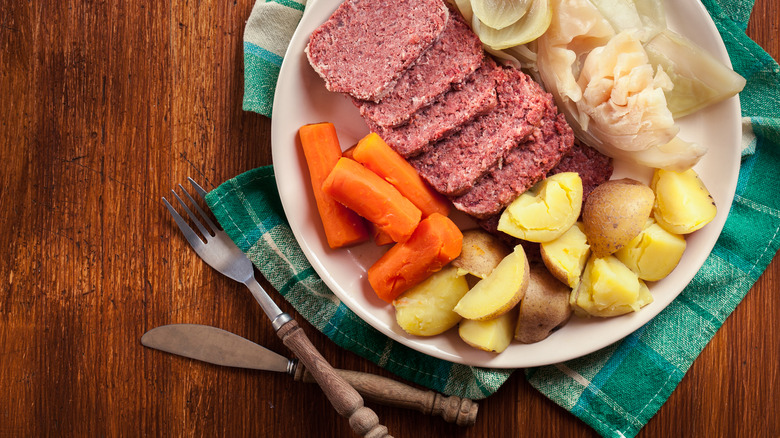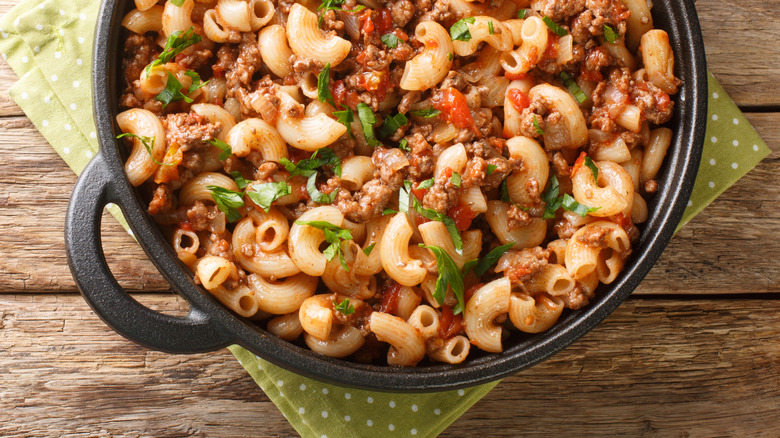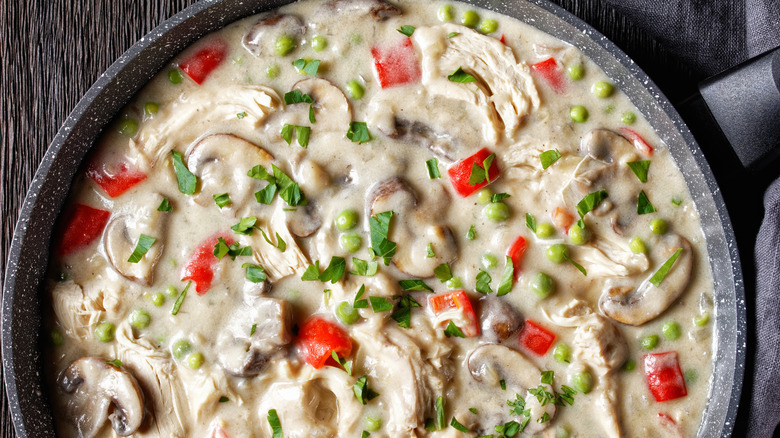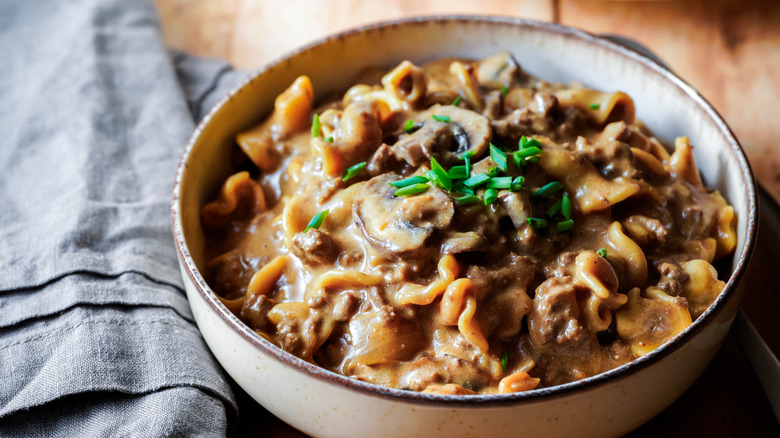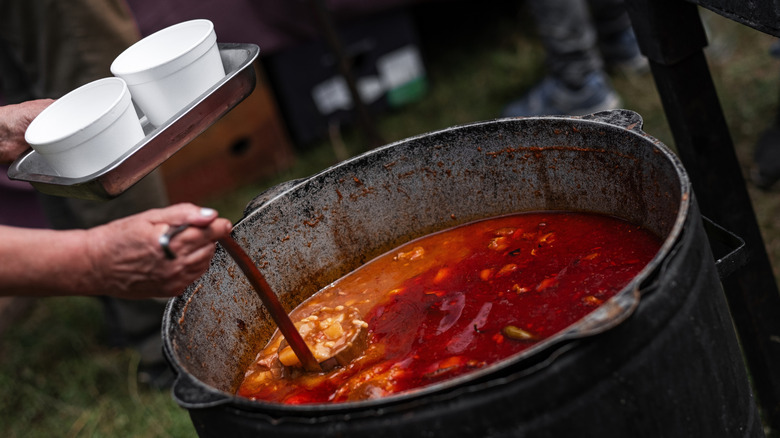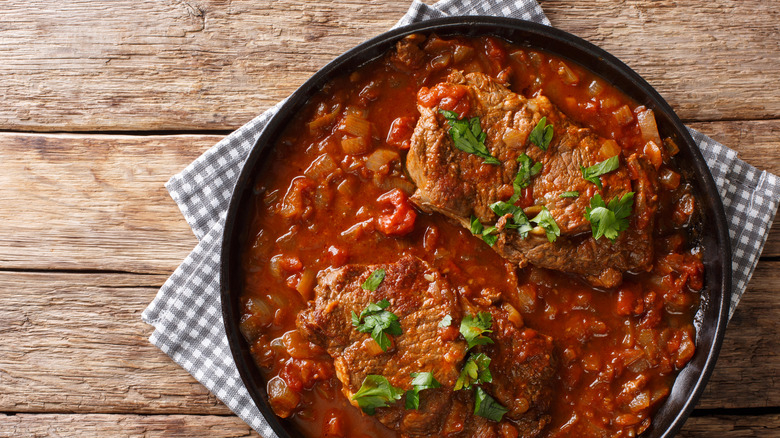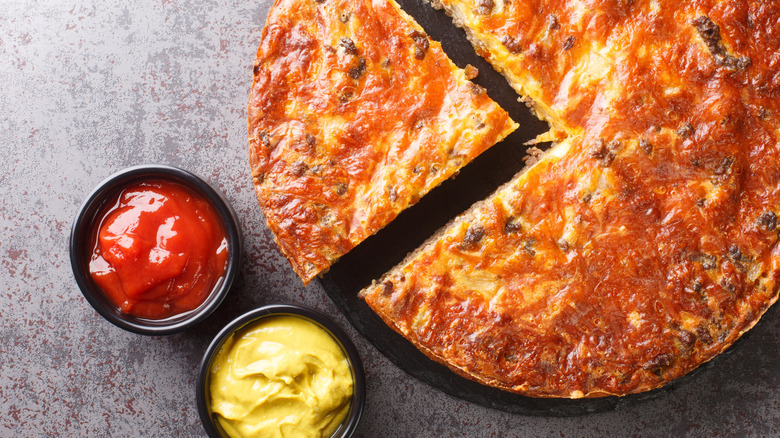9 Classic One-Pot Dishes You Rarely See Anymore
In an era before weeknights were conquered by air fryers and Instant Pots, the family table was ruled by humble and hearty one-pot wonders. These were the casseroles, stews, and skillets that defined mid-century suppers — dishes built on thrift, convenience, and a can of cream of mushroom soup.
Born from economic necessity, these classics emerged from periods of profound cultural change: The Great Depression demanded resourceful stretching of cheap ingredients, while the postwar boom celebrated packaged foods and homemaker efficiency. As health trends shifted and global flavors arrived, many of these iconic dishes faded into history, yet the format endures. Even contemporary celebrity chefs like Ina Garten and Nigella Lawson champion their own versions of one-pot cooking.
From Gilded Age opulence to boxed meal magic, American dining has journeyed from multi-course luncheons to the democratic ease of quick-prep meals — each era reflecting its own ideals of status, efficiency, and taste. The surprising origins and spectacular flops of dishes like chicken á la king and cheeseburger pie trace an arc of culinary rise and decline while raising the question: which of these retro relics is poised for a comeback?
Boiled dinner
Boiled dinner, or more specifically New England boiled dinner, is a masterclass in immigrant adaptation. The dish found its identity in the 19th century through a culinary collaboration between Irish immigrants and Jewish butchers. Unable to find traditional Irish bacon, newcomers adopted corned beef — a brined, affordable cut popularized by Eastern European Jewish delicatessens — and simmered it with hardy root vegetables from their new homeland. This thrifty dish became deeply woven into New England's identity, with its most enduring legacy forged in Depression-era kitchens, where it stretched for days and even found itself on the breakfast table transformed into red flannel hash.
So why did it disappear from weekly rotation? The mid-century embrace of modern appliances like electric ovens made roasting and baking symbols of sophistication, while "boiling" became a pejorative term for bland, mushy, old-fashioned cooking. The dish fell victim to a new culinary ethos that prized crisp textures, complex browning, and convenience over slow simmering.
Yet today, as we reconnect with heritage cooking, boiled dinner might regain relevance beyond its St. Patrick's Day novelty. With endless variations to the recipe, perhaps this one-pot meal is worth revisiting for its narrative depth, effortless preparation, and honest flavors.
Slumgullion
Much like the humble stew, the etymology of slumgullion is a story of improvisation and adaptation. The name's murky origins likely flowed from 19th-century Irish dialects where "gullion" meant a swampy place or the muddy runoff from a farmyard. It first thickened into American vernacular via authors like Herman Melville, who used "slobgollion" to describe vile whale waste in Moby Dick (1851), and Mark Twain, who later lamented a wretched camp beverage by the same name.
By the Great Depression, this term for refuse had been reclaimed to describe a savior of a meal: a hearty, cheap stew of ground beef, tomato sauce, and elbow pasta that staved off hunger. It remained a weeknight staple for decades, further popularized by Chef Boyardee's Beefaroni, which commercialized the concept of an American goulash designed for mass appeal.
Slumgullion's unglamorous name, however, forever anchored it to hardship, and as our culinary horizons broadened, this dish of necessity fell into obscurity. Rather than attempting to rehabilitate a recipe whose very name means "muddy water," perhaps the lesson is to explore its polar opposite: the deeply traditional, richly spiced, and culturally significant Hungarian goulash.
Chicken à la king
Few dishes so adeptly capture the evolution of American dining like chicken à la king. Born in the opulent late 19th century, its origin story is as rich and debated as its sauce — with credit claimed by two hotels (New York's Brighton Beach Hotel and Philadelphia's Bellevue Hotel) and two restaurants (New York's Delmonico's and London's Claridge's).
Wherever it began, this creamy combination of diced chicken, mushrooms, pimientos, and sometimes peas, all smothered in a sherry-laced sauce and served over toast, biscuits, or puff pastry, embodied the luxury of the era. It seamlessly transitioned into the 20th century as a mid-century staple, becoming the darling of ladies' luncheons, wedding receptions, and banquet halls.
Yet its perceived sophistication also led to its downfall. As American culture shifted away from formal entertaining and creamy comforts and toward quick, healthy, and globally inspired flavors, this once-celebrated dish became a relic of a bygone era. Today, its spirit lives on in modern riffs like deconstructed pot pies, but a true revival may require more than nostalgia.
Beef stroganoff
The history of beef stroganoff is one of culinary folklore and democratic appeal. Legend suggests it was created by a French chef for Count Pavel Stroganov — a 19th-century Russian aristocrat with notoriously poor teeth — who needed a tender dish of thinly sliced beef in a velvety sauce. While the tale may be embellished, the recipe that first appeared in a Russian cookbook in 1871 was indeed a sophisticated marriage of French technique (a mustard-laced pan sauce) and Russian tradition (finished with a generous dollop of sour cream).
Forced to travel after the 1917 Revolution, Russian émigrés brought the dish with them to Shanghai and eventually to America, where it evolved: Mushrooms and paprika were added, and serving it over egg noodles became the norm. By the mid-20th century, it was the epitome of elegant yet achievable home cooking. But the 1980s low-fat craze, which vilified its foundational sour cream and red meat, sent the dish into gastronomic exile.
These days, the rich, savory-sour profile and quick-cooking nature of this classic align perfectly with modern tastes, even if adapted for current health trends. Made with tender cuts of meat that are ready for a quick sear and simmer, it delivers the kind of deeply satisfying comfort that today's protein-lovers seek in a one-pot meal.
Chow mein casserole
Chow mein casserole represents a distinct chapter in America's mid-century culinary story — one defined by adaptation, convenience, and cross-cultural interpretation. While its name evokes the Cantonese stir-fried noodle dish introduced by Chinese immigrants in the 1800s, this oven-baked version is a purely American creation. So contentious was its namesake that it drew commentary in The New Yorker, where immigrants informed writers that its crisp noodles and rich sauces were far removed from traditional preparations.
At the heart of this version, and so many casseroles of the era, was a can of cream of mushroom soup, that ubiquitous binder that promised depth and ease to generations of home cooks. (It's true: We still have favorite brands.) Paired with La Choy's canned crispy noodles and whatever protein was on hand, it created a dish that felt both foreign and familiar. It wasn't authentic, but it was accessible — and for a time, that was enough.
As actual Chinese regional cuisine spread across the country, the casserole's appeal waned, replaced by fresher, wok-fired versions closer to the Cantonese original. Yet this curious casserole remains a telling artifact of how American palates often travel the world without ever leaving their kitchens.
Mulligan stew
Mulligan stew was less a recipe and more a philosophy of survival. Born in the transient camps and Hoovervilles of the Great Depression, this dish was the ultimate expression of communal survival. There was no fixed ingredient list; instead, whoever had something to contribute — a scrap of meat, a handful of wilted vegetables, a few foraged herbs — would add it to the pot. Simmered slowly over an open fire, it transformed meager scraps into a warm, shared meal that symbolized solidarity in the face of hardship. Historical accounts note that the stew was surprisingly flavorful, though often dominated by the sweetness of excessive ketchup, a staple that lent it a distinct, if sometimes cloying, character.
As mid-century prosperity grew, such desperate ingenuity slipped into obscurity, replaced by standardized recipes and supermarket convenience. Yet today, mulligan stew feels unexpectedly relevant. Its spirit lives on in the modern no-waste movement, where root-to-stem cooking and leftover reinvention echo the same ethos: Food is too precious to waste, and sharing it is a form of care.
Turkey tetrazzini
Turkey tetrazzini is the unlikely love child of Gilded Age glamour and postwar practicality. Its origin story is as rich as its sauce: according to culinary lore, it was created at San Francisco's Palace Hotel in honor of Italian soprano Luisa Tetrazzini after her acclaimed 1905 performance. In 1908, the recipe first appeared in Good Housekeeping as a dish served at a famous New York hotel, and by the 1930s, it graced menus at iconic venues like Sardi's.
Wherever it began, this creamy, Parmesan-kissed casserole of turkey, noodles, and mushrooms quickly leapt from fine dining menus into American homes, where it found its true calling: giving Thanksgiving leftovers a luxurious second act. By the 1960s, tetrazzini became the post-holiday ritual — a creamy, comforting bake that transformed dry turkey into something elegant, often aided by a can of cream of mushroom soup and whatever cheese was on hand.
But as low-fat trends and world cuisine rose, this thrifty classic faded into memory. Today, it's staging a quiet digital comeback — not as a canned-soup relic, but in healthier, scratch versions that honor its original cleverness of turning simple ingredients and holiday remnants into something worthy of a standing ovation.
Swiss steak
Don't let the name fool you: Swiss steak is thoroughly American, a product of Depression-era smarts that became a dinnertime star in post-war decades. "Swiss" refers not to the country, but to the method of swissing, where tougher, affordable cuts like top round are rolled or pounded prior to being dredged and slow-braised for hours in a tomato-rich sauce until meltingly tender.
With meat budgets tight, home cooks turned to economical cuts, transforming them through patience and simmering sauces into hearty, company-worthy fare. By the '50s, Swiss steak was everywhere — featured in Hollywood family scenes, celebrated in women's magazines, and even printed on boxes of Reynolds Wrap.
But as convenience foods and lean proteins gained favor, this braise-and-wait classic slipped from the spotlight. While it hasn't staged the comeback of, say, meatloaf or pot roast, Swiss steak remains a quiet lesson in thrift and technique — proof that the toughest cuts often deliver the deepest flavor.
Cheeseburger pie
In a decade known for convenience-food innovation, Bisquick's "impossible pie" concept stood out as a true dinner-table marvel. With quick-assembly that promised a self-forming crust, cheeseburger pie became the campaign's savory star: A quiche-like bake of raw ground beef, onions, and cheese smothered in a simple batter that miraculously settled into layers as it cooked. It was the ultimate weeknight solution, a dinner that felt both whimsical and effortless.
As food safety concerns grew over baking raw meat in batter, and as home cooks began turning away from processed shortcuts, the charm of this kitchen trick fell out of favor. Unlike its impossible pie cousin — the sweet coconut version that has roots in scratch Southern baking and a more forgiving custard format – cheeseburger pie never quite shook its reputation as a dated, risk-prone novelty. Today, the same curiosity about what's in the box is precisely why this pie feels like a relic from a different culinary world.


